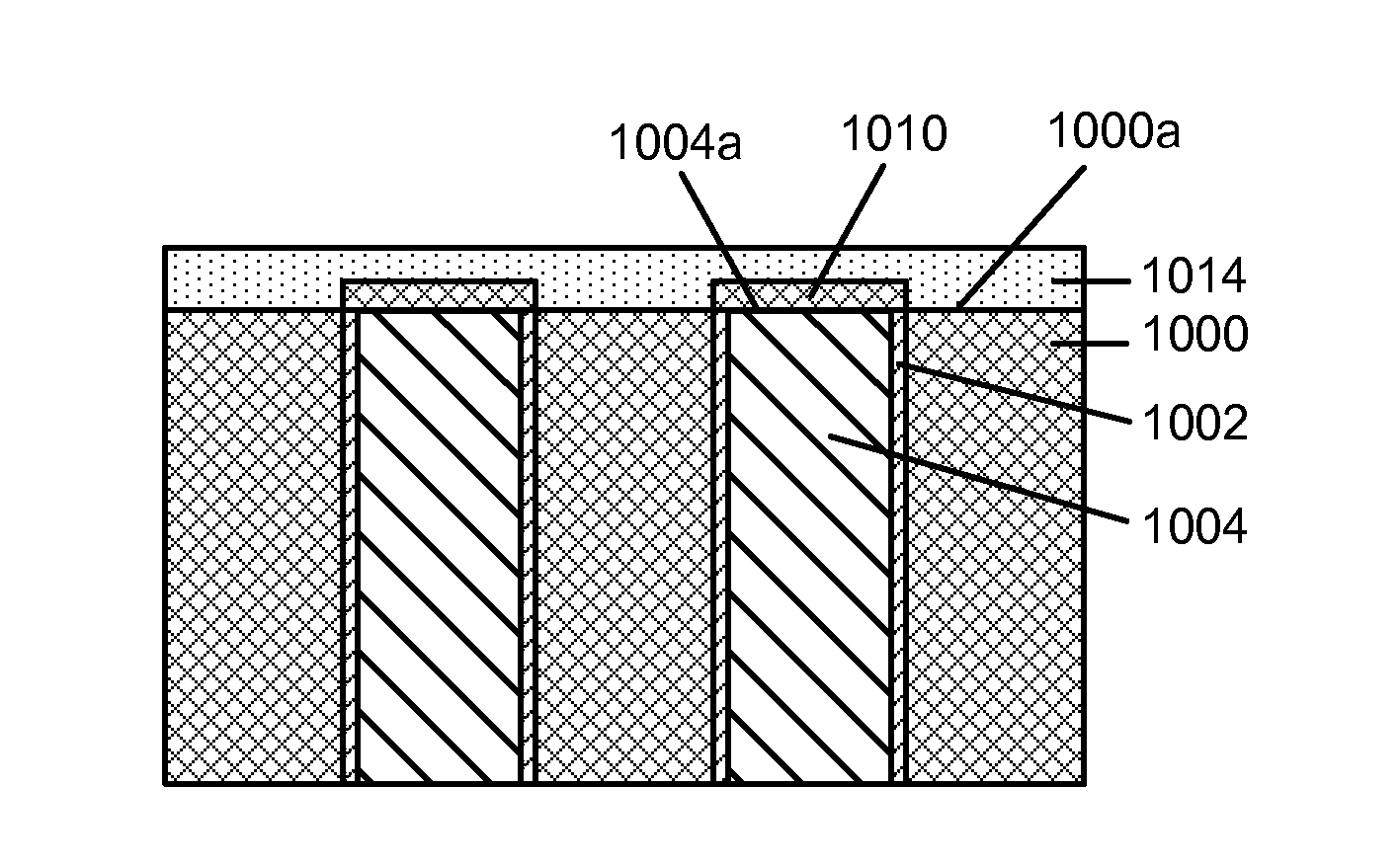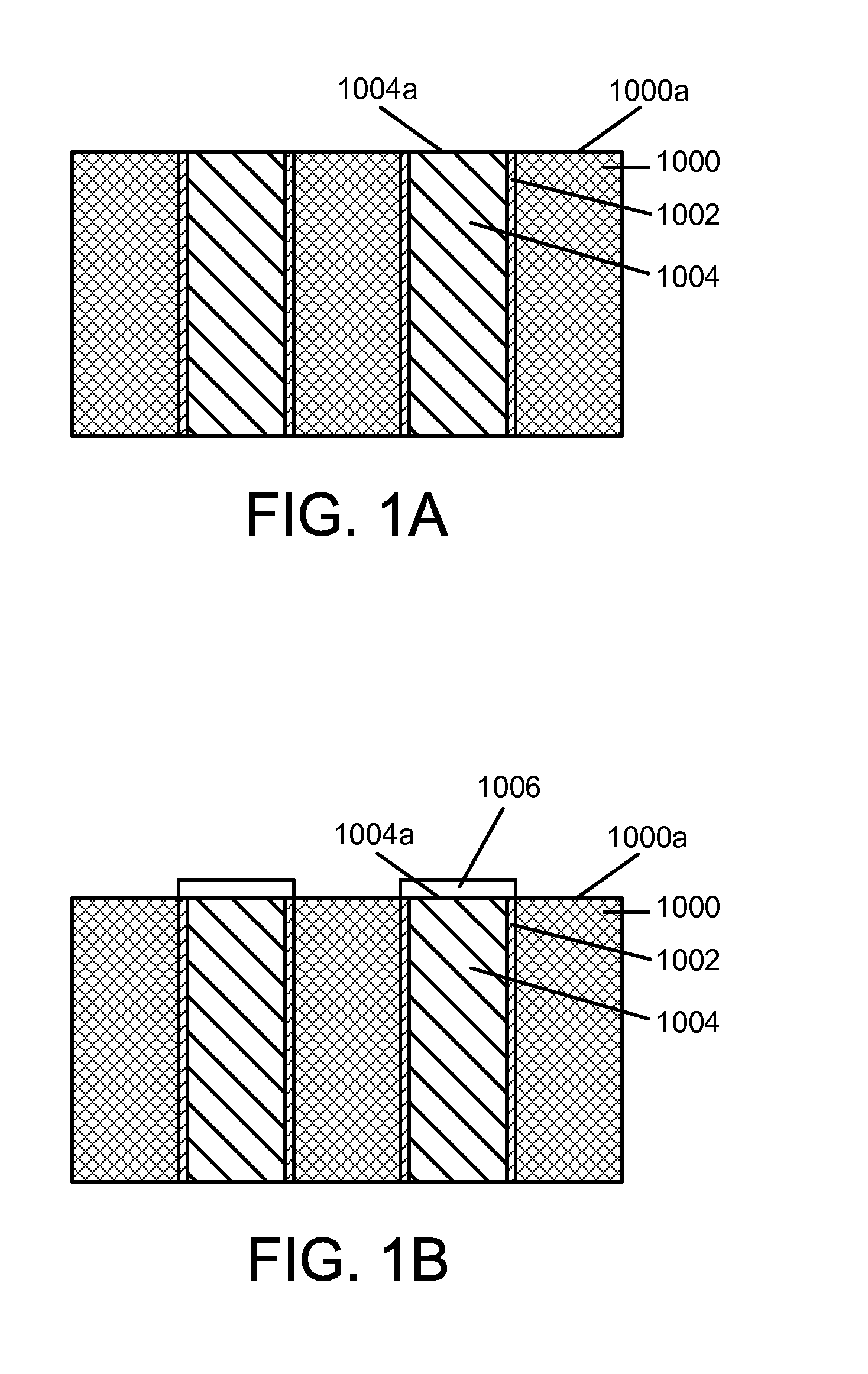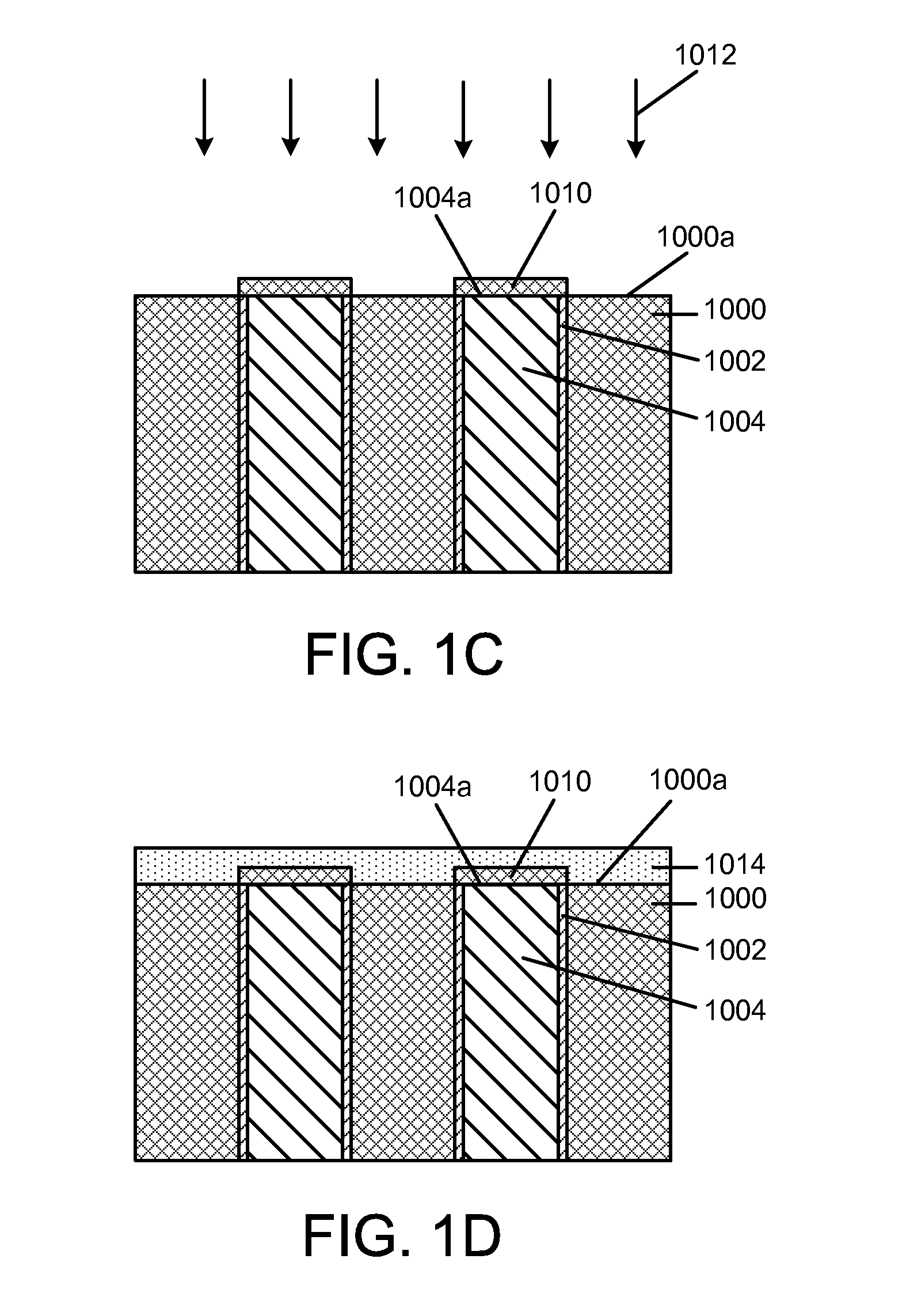Method for modifying metal cap layers in semiconductor devices
a technology of metal cap layer and semiconductor device, which is applied in the direction of coating, semiconductor device, chemical vapor deposition coating, etc., can solve the problems of affecting the acceptance of this complex process, em and sm have fast become critical challenges, and the defects that can destroy an integrated circuit, so as to improve the effect of em and sm
- Summary
- Abstract
- Description
- Claims
- Application Information
AI Technical Summary
Benefits of technology
Problems solved by technology
Method used
Image
Examples
experimental examples
[0034]FIG. 3 shows oxidation resistance results for a dielectric barrier film and a modified Ru metal cap layer according to an embodiment of the invention. The SiCN / Ru / Cu test film structures were formed on 300 mm Si wafers. The experimental matrix included unmodified Ru metal cap layers with thicknesses of 5 nm and 10 nm, Ru metal cap layers with thicknesses of 5 nm and 10 nm modified with NH3 gas exposure without plasma excitation, and SiCN dielectric barrier film thicknesses of 15 nm, 10 nm, 5 nm, and 0 nm (no SiCN dielectric barrier film). The Si wafers with the SiCN / Ru / Cu test structures were subjected to an oxidation barrier test in air at 250° C. for 48 hours. Following the oxidation barrier test, the test structures were evaluated using a scanning electron microscope (SEM) and given a FAILED or PASSED grade. A test structure showing the sign of Cu blistering or film pinholes that indicated oxidation barrier failure of the SiCN / Ru failure received a FAILED grade whereas a te...
PUM
| Property | Measurement | Unit |
|---|---|---|
| thickness | aaaaa | aaaaa |
| thickness | aaaaa | aaaaa |
| width | aaaaa | aaaaa |
Abstract
Description
Claims
Application Information
 Login to View More
Login to View More - R&D
- Intellectual Property
- Life Sciences
- Materials
- Tech Scout
- Unparalleled Data Quality
- Higher Quality Content
- 60% Fewer Hallucinations
Browse by: Latest US Patents, China's latest patents, Technical Efficacy Thesaurus, Application Domain, Technology Topic, Popular Technical Reports.
© 2025 PatSnap. All rights reserved.Legal|Privacy policy|Modern Slavery Act Transparency Statement|Sitemap|About US| Contact US: help@patsnap.com



